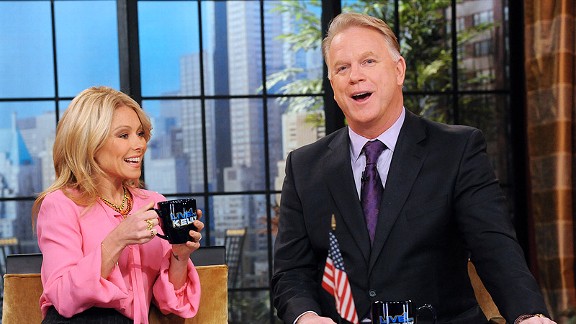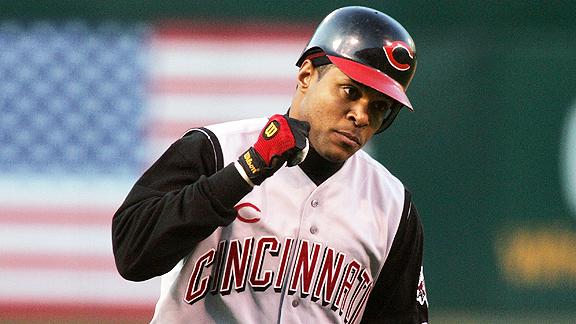Cincinnati is unquestionably a baseball town to the core thanks to the Reds. The city had its split second with professional basketball thanks to the Royals. The 1980s were constant a stage of domination for football because of the Bengals.
Throughout Cincinnati history, there have been some inspirational names to bring the set on fire as the face of Cincinnati sports.
The following names are listed alphabetically and are some of the most significant figures to forever elegance the city of Cincinnati as professional sports players. Their statistics are frequently a debatable point. Rather, their collision on the city as a whole during their stay is more significant.
Ken Anderson (Bengals, 1971-86)
Anderson is one of the most critical figures in Cincinnati sports history, not only because he holds a variety of Bengals records, such as career passing yards (32,838) and touchdowns (197), but also for the 16 years he was one of the leaders of the team. He took the Bengals to Super Bowl XVI. Despite coming up short, Anderson remains one of the most important players the franchise has ever seen.
Johnny Bench (Reds, 1967-83)
Bench spent 17 years as a member of the Reds and is arguably the greatest catcher to ever grace a baseball field. He was a critical component of The Big Red Machine in the 1970s and brought home two MVP Awards to Cincinnati. His impact on the game and city is felt to this day.
Boomer Esiason (Bengals, 1984-92, 1997)
Boomer led the Bengals through their most successful stretch as a franchise and took the team to Super Bowl XXIII. Like Anderson, Esiason failed in the big game, but, arguably, no one had a bigger presence for the team over the course of his 134 games.
Barry Larkin (Reds, 1986-2004)
Larkin was a local boy from Moeller High School who was easily one of the most loved members of the Reds for the duration of his career with the team. He played 19 years and was arguably the best shortstop in the game from 1990 through 2000. Larkin led the Reds to a World Series title in 1990 and brought an MVP trophy to Cincinnati in 1995.
Joe Morgan (Reds, 1972-79)
Yes, Morgan spent just eight of his 22 years in MLB with the Reds. That doesn't mean much here. Morgan is one of the most recognizable faces in Cincinnati history, probably in part because he went to the All-Star game each year with the team, won back-to-back MVP Awards in 1975 and 1976, won a Gold Glove five out of eight times, and helped the Reds win two World Series championships.
Anthony Munoz (Bengals, 1980-92)
Munoz is the greatest offensive lineman in NFL history and the Bengals' only member of the Hall of Fame. He made 11 consecutive Pro Bowls back when the accomplishment meant something and played 183 games while leading the team through the wildly successful '80s.
Tony Perez (Reds, 1964-76, 84-86)
Perez was the heart and soul of The Big Red Machine as the team went to four World Series in seven years (1970-76), winning two. After Perez was traded and replaced at first base in Cincinnati, The Big Red Machine was never the same.
Oscar Robertson (Royals, 1960-70)
Big O had a highly successful college run with the Cincinnati Bearcats, averaging a ridiculous 33.8 points per game. He was then drafted by the Royals, and he continued his dominance for 10 years, earning rookie of the year, an MVP, and 10 All-Star game nods. He is the most important basketball figure in Cincinnati history.
Frank Robinson (Reds, 1956-65)
This one has to sting a bit. Robinson spent 10 years with the Reds before being shipped to Baltimore because general manager Bill DeWitt decided Robinson was too old at the age of 30 (he went on to win the AL Triple Crown and MVP the following year). Robinson's years with the Reds were outstanding, including an MVP Award and his only Gold Glove. He entered the Hall of Fame as an Oriole.
Pete Rose (Reds, 1963-78, 1984-86)
Pete is the hometown hero for Cincinnati. He grew up in the city, played high-school ball in the city, and went on to become the hit king with 4,256 hits. He played 24 seasons and was named an All-Star 17 times. He won two Gold Gloves, an MVP Award and two World Series. He's one of the most iconic players in the history of any sport and easily the most important player in Cincinnati history.
Source: Yahoo! Sports
Throughout Cincinnati history, there have been some inspirational names to bring the set on fire as the face of Cincinnati sports.
The following names are listed alphabetically and are some of the most significant figures to forever elegance the city of Cincinnati as professional sports players. Their statistics are frequently a debatable point. Rather, their collision on the city as a whole during their stay is more significant.
Ken Anderson (Bengals, 1971-86)
Anderson is one of the most critical figures in Cincinnati sports history, not only because he holds a variety of Bengals records, such as career passing yards (32,838) and touchdowns (197), but also for the 16 years he was one of the leaders of the team. He took the Bengals to Super Bowl XVI. Despite coming up short, Anderson remains one of the most important players the franchise has ever seen.
Johnny Bench (Reds, 1967-83)
Bench spent 17 years as a member of the Reds and is arguably the greatest catcher to ever grace a baseball field. He was a critical component of The Big Red Machine in the 1970s and brought home two MVP Awards to Cincinnati. His impact on the game and city is felt to this day.
Boomer Esiason (Bengals, 1984-92, 1997)
Boomer led the Bengals through their most successful stretch as a franchise and took the team to Super Bowl XXIII. Like Anderson, Esiason failed in the big game, but, arguably, no one had a bigger presence for the team over the course of his 134 games.
Barry Larkin (Reds, 1986-2004)
Larkin was a local boy from Moeller High School who was easily one of the most loved members of the Reds for the duration of his career with the team. He played 19 years and was arguably the best shortstop in the game from 1990 through 2000. Larkin led the Reds to a World Series title in 1990 and brought an MVP trophy to Cincinnati in 1995.
Joe Morgan (Reds, 1972-79)
Yes, Morgan spent just eight of his 22 years in MLB with the Reds. That doesn't mean much here. Morgan is one of the most recognizable faces in Cincinnati history, probably in part because he went to the All-Star game each year with the team, won back-to-back MVP Awards in 1975 and 1976, won a Gold Glove five out of eight times, and helped the Reds win two World Series championships.
Anthony Munoz (Bengals, 1980-92)
Munoz is the greatest offensive lineman in NFL history and the Bengals' only member of the Hall of Fame. He made 11 consecutive Pro Bowls back when the accomplishment meant something and played 183 games while leading the team through the wildly successful '80s.
Tony Perez (Reds, 1964-76, 84-86)
Perez was the heart and soul of The Big Red Machine as the team went to four World Series in seven years (1970-76), winning two. After Perez was traded and replaced at first base in Cincinnati, The Big Red Machine was never the same.
Oscar Robertson (Royals, 1960-70)
Big O had a highly successful college run with the Cincinnati Bearcats, averaging a ridiculous 33.8 points per game. He was then drafted by the Royals, and he continued his dominance for 10 years, earning rookie of the year, an MVP, and 10 All-Star game nods. He is the most important basketball figure in Cincinnati history.
Frank Robinson (Reds, 1956-65)
This one has to sting a bit. Robinson spent 10 years with the Reds before being shipped to Baltimore because general manager Bill DeWitt decided Robinson was too old at the age of 30 (he went on to win the AL Triple Crown and MVP the following year). Robinson's years with the Reds were outstanding, including an MVP Award and his only Gold Glove. He entered the Hall of Fame as an Oriole.
Pete Rose (Reds, 1963-78, 1984-86)
Pete is the hometown hero for Cincinnati. He grew up in the city, played high-school ball in the city, and went on to become the hit king with 4,256 hits. He played 24 seasons and was named an All-Star 17 times. He won two Gold Gloves, an MVP Award and two World Series. He's one of the most iconic players in the history of any sport and easily the most important player in Cincinnati history.
Source: Yahoo! Sports










No comments:
Post a Comment